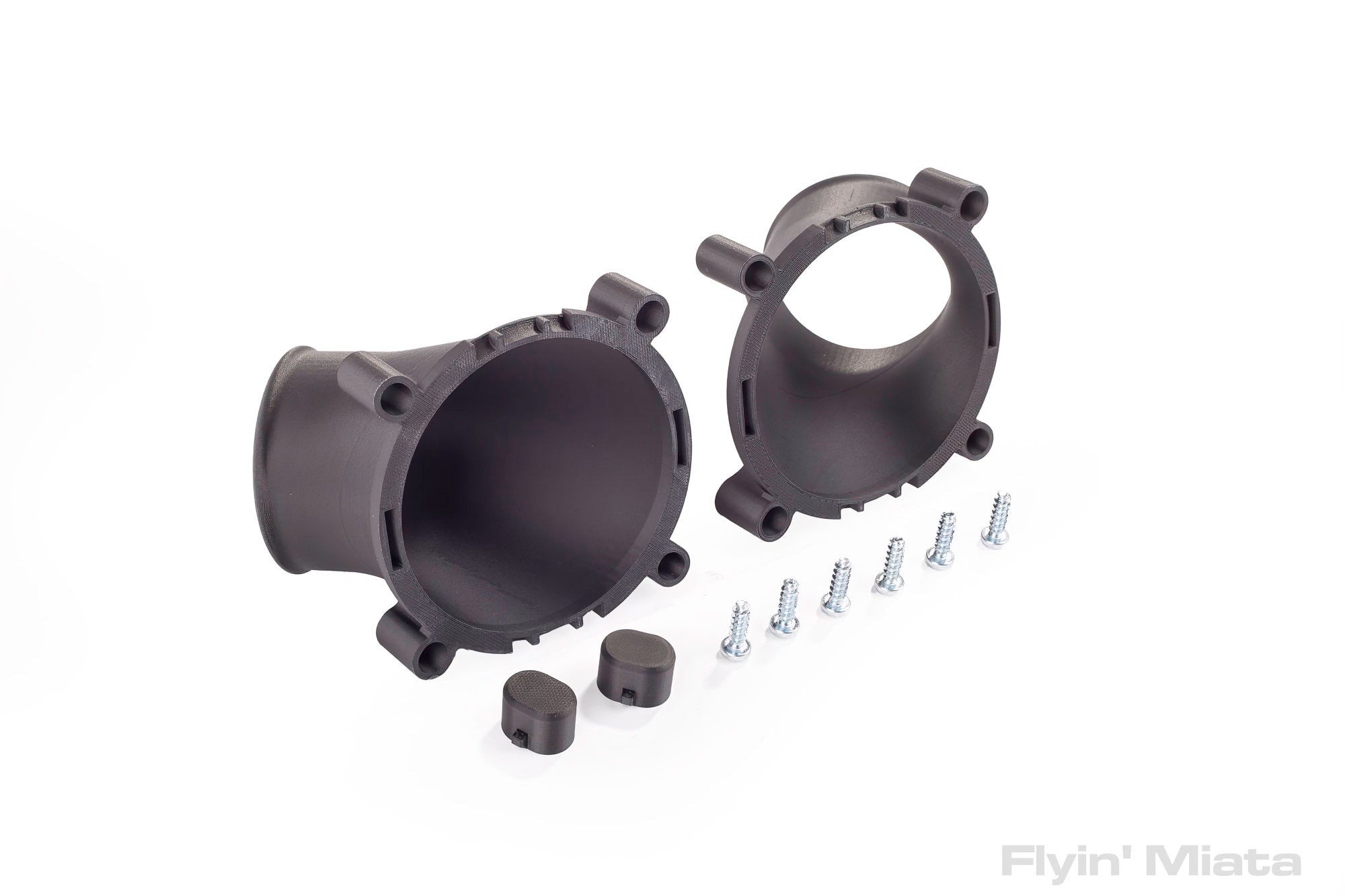Interesting. Making technology work for you.
Those would probably fit on my 1997 Jetta also. Hmmm....


Photography Credits: Tom Suddard
[GRM+ members read this article first. Subscribe and gain access to more exclusive content for only $3/month.]
Can more speed be created out of thin air? As it turns out, the answer is yes—as long as you have a 3D printer.
[A crash course in 3D printing | Making Stuff: Part 2]
Fresh pads and rotors improved our Mk7 Volkswagen Golf GTI’s braking on track, but the car still cooked its brake pads after a few back-to-back hot laps on tough tracks like CMP or the FIRM, leading to fade and slower, more dangerous laps.
[Brake fade: What you need to know and how to fix it]
No problem, right? Just switch to race pads designed for higher temperatures.
That’s a fine solution for a track car, but our goal has been consistent all along: Drive this car daily, then do track days on the weekends with zero modifications.
Before switching to more aggressive pads, we wanted to try another alternative: more airflow. And no, not via traditional brake ducts. Sure, drilling holes in the front bumper and hooking tubes to each wheel works great, but it’s not a low-maintenance option. On a daily driven street car, brake ducts can quickly fall apart, rub on tires or clog with crud.
Instead, we decided to fit a pair of brake deflectors. These are usually simple parts that bolt onto the control arm and deflect air toward the brake rotor.
Need a real-world example? Check out Porsche’s 911 GT3 for inspiration. These aren’t normally as efficient as real ducts, but they’re far more durable and simpler to install.
[Building bargain brake ducts from Porsche GT3 parts?]
That posed a question: What do we make them out of? Before we could even look at the aluminum scrap bin, we downloaded a pre-made CAD file from Thingiverse. Inside, it promised a pair of brake ducts, ready to print, that would perfectly fit our Mk7 GTI. The cost? $0. Isn’t the future amazing?
Our friends at Caliper Garage printed the ducts out of black ABS, and then we took them to the FIRM for a test day.
Photography credits: Chris Tropea
The test protocol?
Take the car out, cook the brakes,and then fit the ducts at lunch and head back on track. We also took caliper temperature readings with an infrared pyrometer immediately after coming off track.
So what’s the verdict?
First, these plastic deflectors are plenty durable–we installed them 8000 miles and 15 track days ago, and they’re still on the car and look fine.
Second, well, they work! Peak caliper temperatures didn’t drop much–roughly 30 degrees, taking them just below 380 degrees–but the car’s brakes now recover after a few corners instead of requiring a few slow laps. It takes longer to overheat the pads, too, and it’s much quicker to bring them back down to their ideal temperature.

Photography credit: Chris Tropea
Brakes used to be the car’s limiting factor on track, but now they aren’t even a consideration until 15-20 minutes of track time. Bottom line, we’d call this modification a success.
Interesting. Making technology work for you.
Those would probably fit on my 1997 Jetta also. Hmmm....
Noddaz said:Interesting. Making technology work for you.
Exactly. Bonus points since the file Tom got was free.
Great experiment. Here in the UK at least, the RS3 8V is supplied with brake ducts very very similar to what you've created and these ducts are quite universal and are a complete bolt on to mk7 golfs, I run them on a mk5 with a slight modification to make them fit but I've seen people run them on honda's with double a arm setup so they're pretty universal. They're pretty cheap too which is surprising! Do you get these over in the states or is this the reason you had to create your own?
That's fine if you're running VW...
Do you have anything for C5 Corvettes on brake ducting? Tried to see if there was anything on "Thingaverse" but they have nothing and no way to contact them. And no, it's not a Z06, but a Base C5 Convertible. Yes, I have modded a few things to make it pass with tech...
Any help?
Thingiverse isn't a place that develops and designs, it's a repository of community submitted designs. So you can't really contact them and request something.
We sell 3D printed duct inlets for Miatas. It's a great use of the technology.


Also, our shop ND V8 ran a set of printed prototype inlets that I slathered some fiberglass on to add extra strength. It survived several years of journalist abuse.

There's Shapeways and other services that will print for you but they charge a premium and don't design anything. You just upload an .stl and they give you a price. You can pull the trigger right then and there but it's spendy. Maybe a 2 week turnaround, depending on size and demand.
Turbo_Rev said:There's Shapeways and other services that will print for you but they charge a premium and don't design anything. You just upload an .stl and they give you a price. You can pull the trigger right then and there but it's spendy. Maybe a 2 week turnaround, depending on size and demand.
"Tyranny is the deliberate removal of nuance” -Albert Maysles
lots of service bureaus out there, any many of them outsource it other ones. We prototype brake ducts all the time - allows us to change the design up until tool kick off without any unnecessary engineering changes.
In reply to Tom_Spangler (Forum Supporter) :
ABS, ASA, Nylon, maaaaaybe PETG.
If I had a project that was going to live outside, I'd lean towards ASA. I'd paint it with something opaque, no matter what.
Displaying 1-10 of 14 commentsView all comments on the GRM forums
You'll need to log in to post.